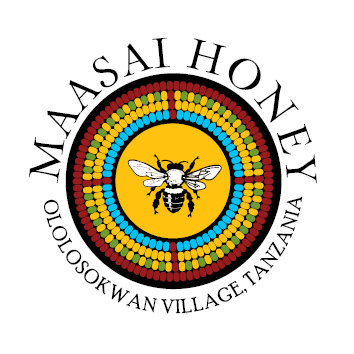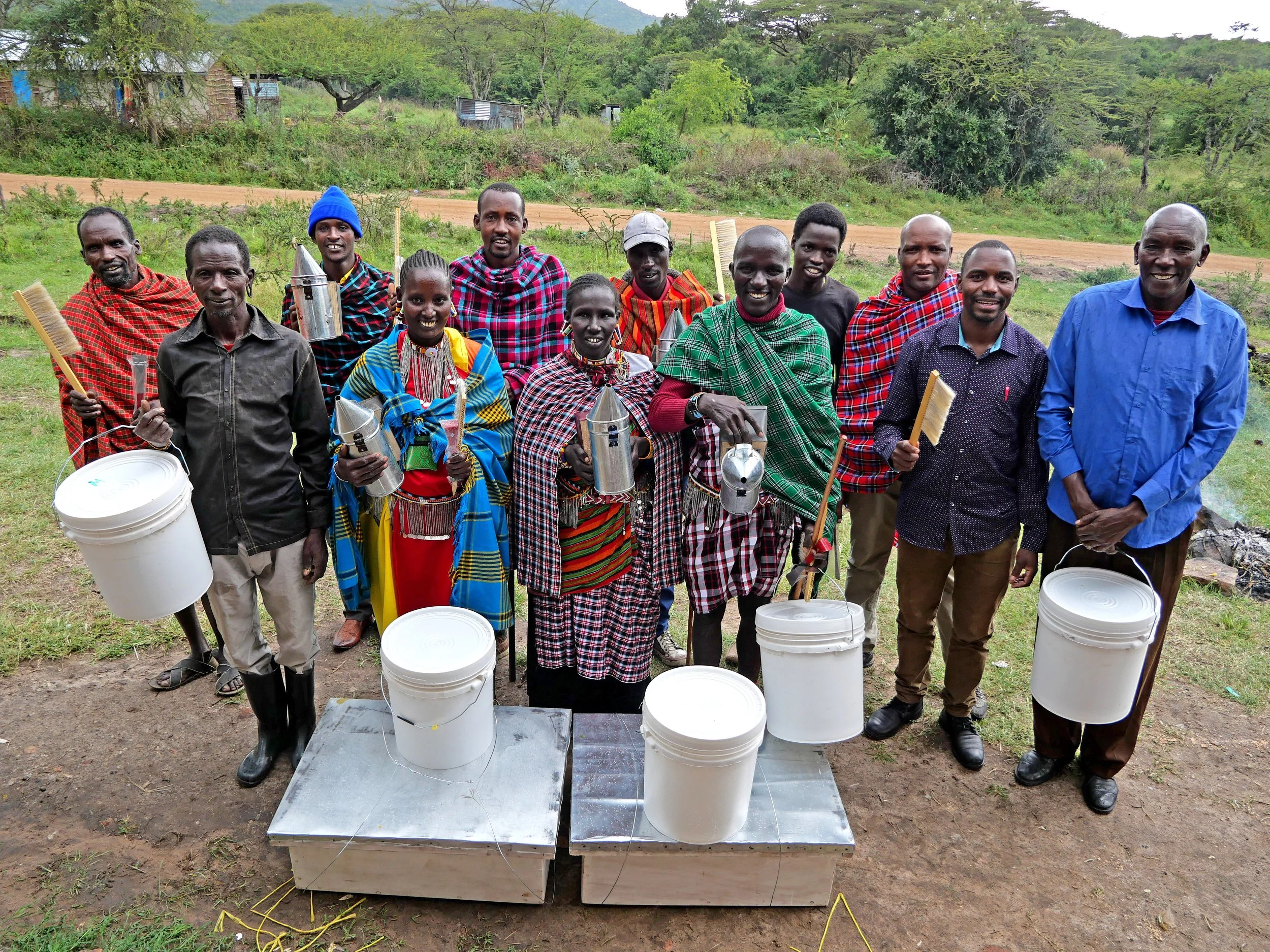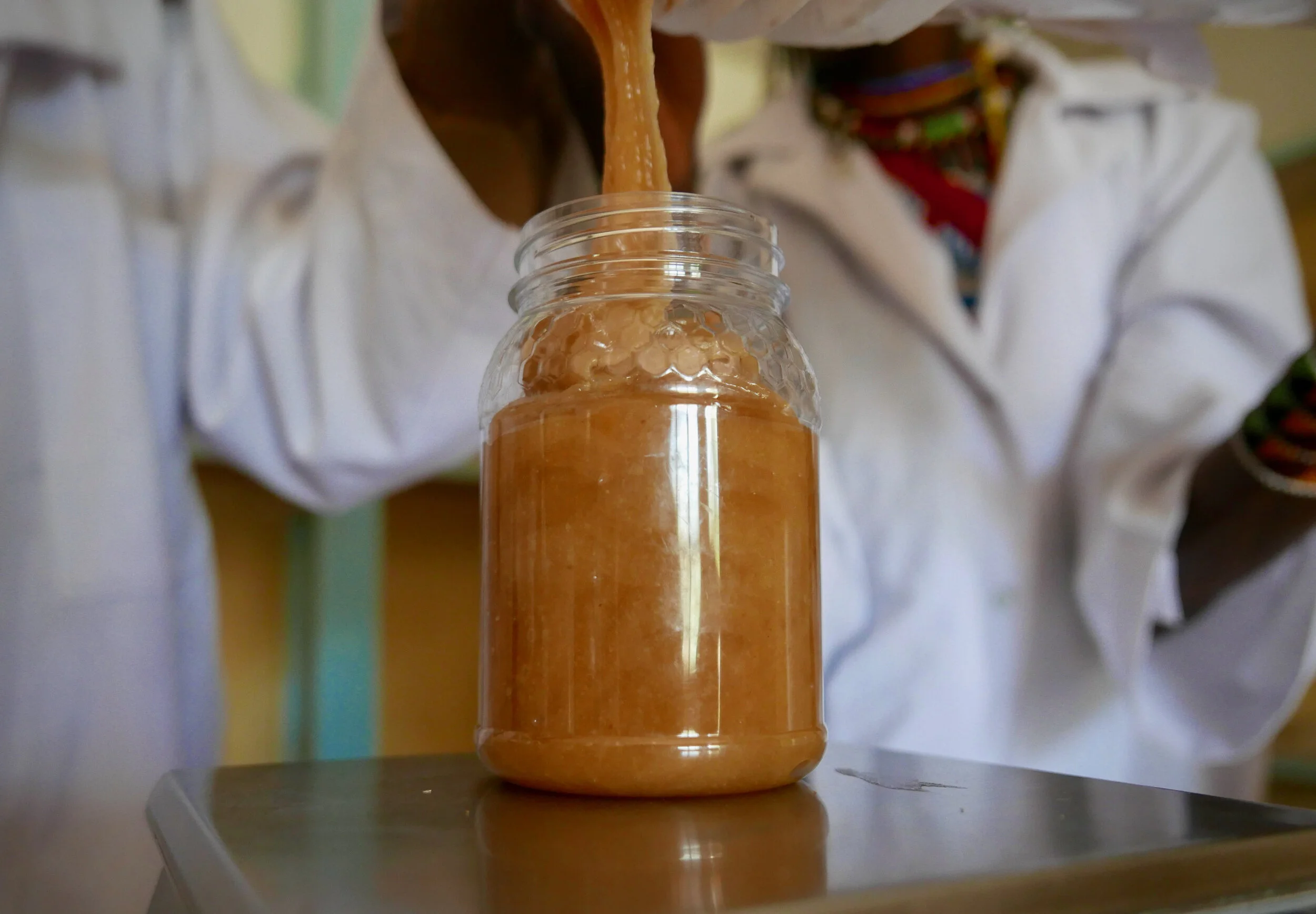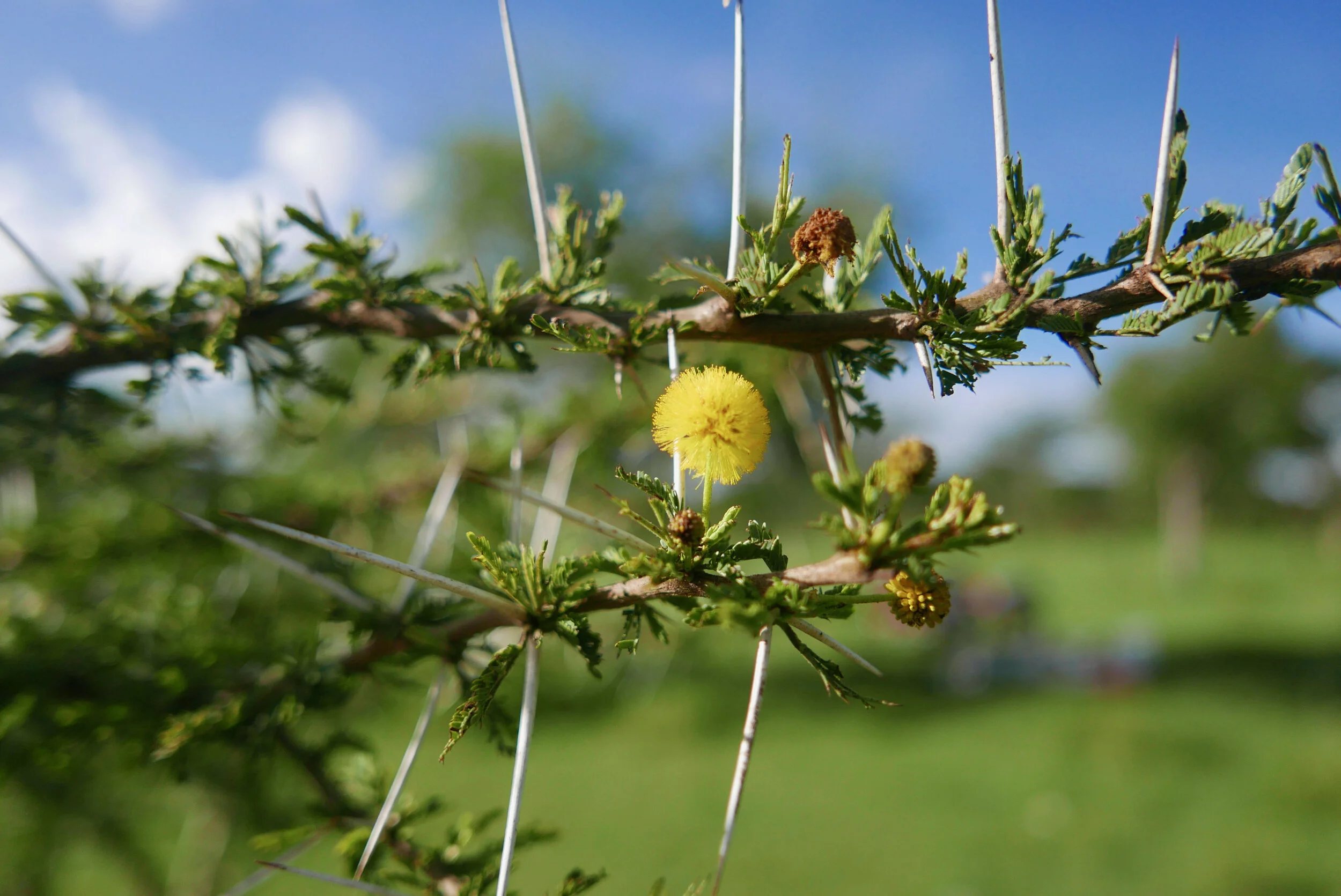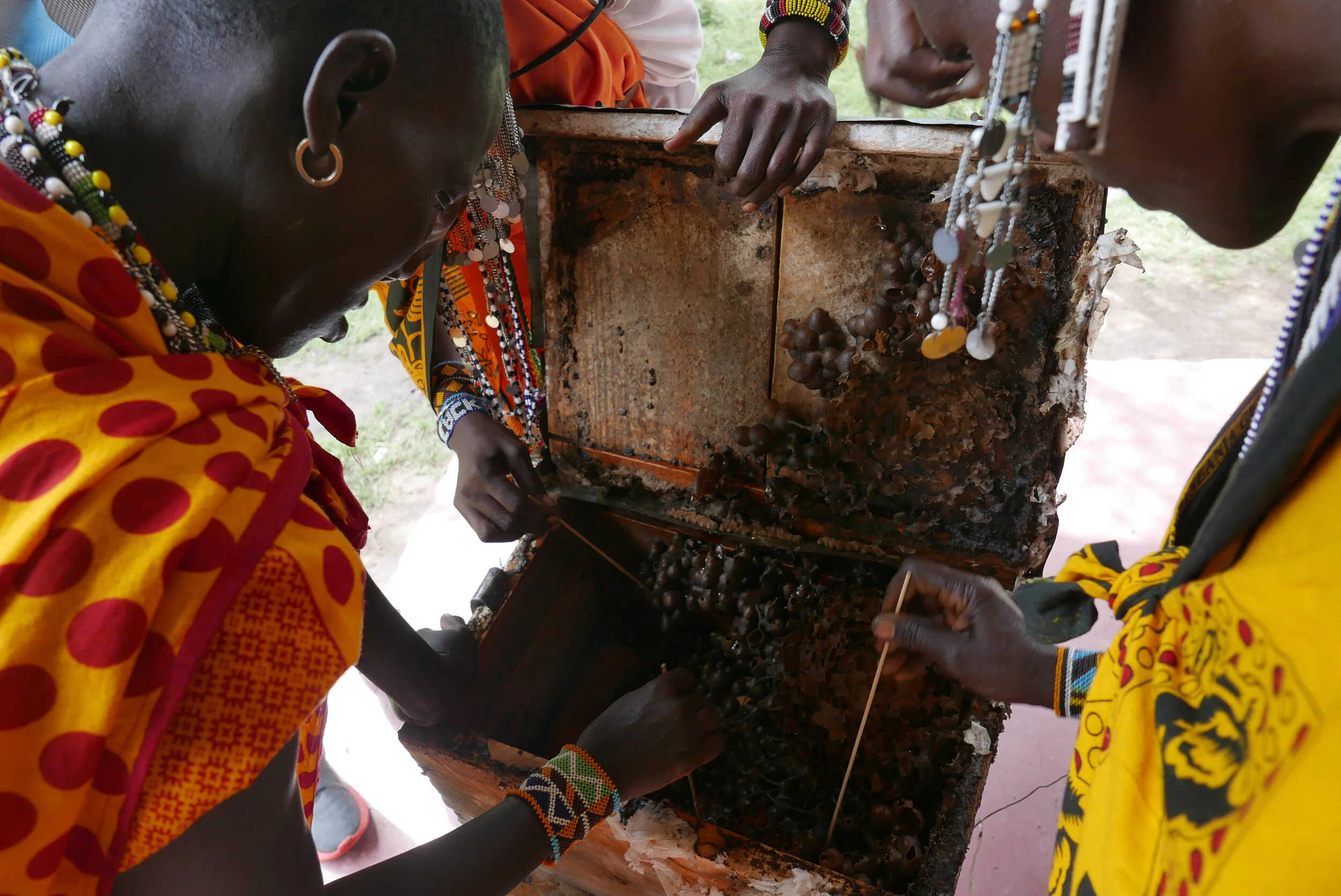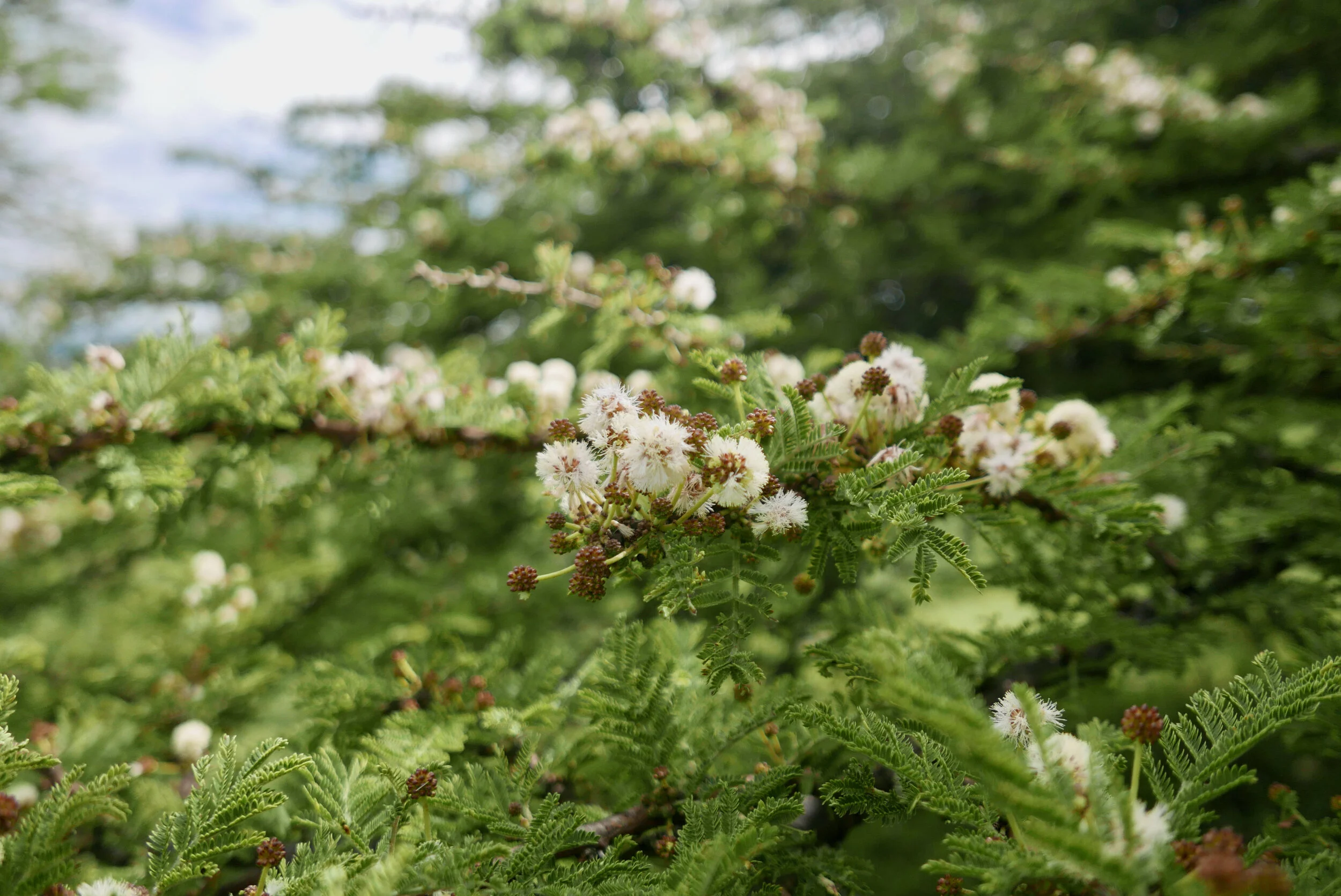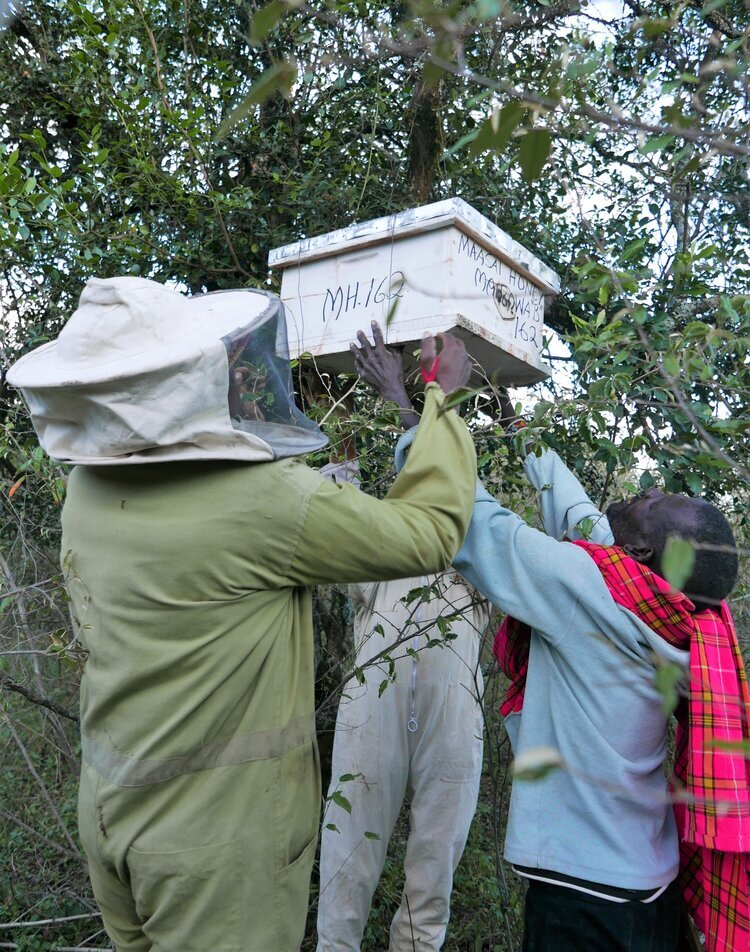Maasai Honey is thrilled to announce support from the US Forest Service, in order to conduct even more beekeeping trainings in rural Tanzania! This exciting opportunity will allow Maasai Honey to expand into other rural villages, reaching over 50 beneficiaries in 3 different locations.
Read MoreBeekeeping lends itself to the remote, wild environments of rural Tanzania. While job opportunities in small villages may be scarce, a beekeeper’s work yields honey, which can be traded, eaten, or sold for a profit. The goal of the Maasai Honey 10-day training course is to equip trainees with knowledge, practical skills, and equipment- so that they can begin their own at-home apiaries! Composed of both theoretical and hands on lessons, the beekeeping instructors cover topics such as the hive caste, honeybee health and diseases, types of apiaries, plus lessons on all of the necessary tools and equipment.
Read MoreWe are excited to announce the completion of our top-bar training cage! This structure has been sponsored by the Greenwich World Hunger Association, as part of our educational initiatives in top-bar beekeeping. The bee cage holds 3 top-bar hives, which will be utilized for hand-on trainings with village residents of Ololosokwan. Each hive sits on a hanging hive stand, so that the hives can be easily opened during demonstrations and trainings.
Read MoreBee ready for Thanksgiving with this honey pumpkin pie, made with pure honey instead of sugar! The filling is simple, but delectable - pumpkin, honey, eggs, and cream, plus warming, aromatic spices. This recipe is for a 9-inch pie, which makes about 8-10 servings (depending on the size of your servings!) It can be made dairy-free by substituting a non-dairy milk or gluten-free by preparing a gluten-free pie crust. Alternatively, you can make a crustless custard by baking the filling in pudding dishes! Let us know in the comments how your honey pumpkin pie comes out!
Read MoreThe Hadzabe tribe lives in a small part of central Tanzania, near to Lake Eyasi. One of the last hunter gatherer tribes on the planet, the Hadzabe live off of the land, gathering fruits and roots, plus hunting for meat…and honey!
For the Hadzabe, honey is a valuable food source and trading commodity. While some members of the tribe may keep bees in modern beehives, traditionally the Hadzabe will find bee colonies in the wild, harvesting the desired parts of the comb. They will eat the brood, pollen, and honey - just about any part of the comb thats edible!
Read MoreThis video will transport you to Ololosokwan Village in Northern Tanzania, where Maasai Honey trains and empowers Maasai women as beekeepers! Situated on the edge of the Serengeti National Park, apiaries are surrounded by savannah forests, acacia trees, and a diverse array of wildlife. Learn about our honey production process, from start to finish and meet the women of Maasai Honey. The end result is not only delicious, it also supports a good cause!
Read MoreNow you can support Maasai Honey by shopping on Amazon Smile! By making Maasai Honey your charity of choice, Amazon Smile will automatically donate a small percentage of every purchase!
CLICK HERE TO CHOOSE MAASAI HONEY
If you are new to Amazon Smile, just click “Start Shopping”. Only purchases made through smile.amazon.com will apply.
Read MoreUpon arriving home, I noticed a bee was hanging on some of my laundry. A scarf was on the line, blowing in the wind, with the insect clung to it. I admired the bee for a while, noticing the yellow pollen she was carrying on her legs. I then decided that I would go inside to get my camera, unsure if she would still be there when I returned. Sure enough, she was still there, clinging to my green scarf. After a few moments a large gust of wind came and blew the bee off, but to my astonishment she landed on the ground not too far away.
Read MoreWhat is a “Stingless Bee Cage?” you may ask.
It is a protective structure that houses hives of stingless, Melipona bees! The cage has many benefits, but its prime purpose is to keep the hives safe from predators. While it keeps intruders out, the screened walls still allow bees to fly freely.
Maasai Honey is pleased to announce the completion of their first apiary cage dedicated exclusively to stingless bees!
Read MoreOne of the easiest and most nutritious ways to consume honey is in your salad! Honey easily mixes with oils and other condiments, plus, by consuming raw honey you maximize the health benefits. Raw honey includes healthful live enzymes and heat-sensitive vitamins that would otherwise be lost in cooking. So why don’t you make your own dressing thats natural and healthy?! Here are some recipe ideas for including nature’s sweetness in your salads!
Read MoreA honey’s texture tells a lot about its composition. A liquid honey implies more water or fructose sugars, while a thicker, crystallized honey implies low water content and more glucose sugars. While this is true for natural honeys, what if there is something else thickening that honey? Has it been mixed with sugar or syrup for artificial sweetness or added volume? While you can’t know exactly whats in the jar without testing, there are some ways to differentiate pure honey from those that are mixed with sugar.
Read MoreThere are literally thousands of different types of bees! They are classified through scientific taxonomy, which categorizes the various species and further divides them into sub-species. Still, most bees do not produce honey…
There are about 43 different kinds of honeybees, all of which fall under the Apis genus. Each variety boasts unique traits and characteristics, which correspond to the climate and environment where the bees reside. The majority of honeybee species occur in Asia and it is theorized that all honeybees originated there, then later migrated to Africa and Europe. Only when Europeans migrated West were honeybees introduced to the Americas.
It’s right after the rainy season, when the flowers of many trees and shrubs are in bloom. Each year is different; if the rains have been plentiful there’s an abundance of flowering plants, but if the season has been sparse this may mean less flowers. It’s at this time, a bit like Spring in the Serengeti, that bees are actively foraging - gathering nectar and pollen from the flowers.
Read MoreJust as there are many different kinds of bees, there are also many different kinds of beehives! The management of stinging honey bees differs quite significantly from stingless bees. At Maasai Honey, we primarily keep stinging honeybees, but we also have about 14 hives of stingless bees (Melipona).
Here’s a report from beekeeper Zombe Aziz, on the current status of stingless beekeeping operations at Maasai Honey.
Read MoreHoney is famed for its deliciousness and is widely consumed across the world, but what exactly is inside that jar of sweetness? Although honey has a general composition, in reality - all honeys are unique! A number of factors, mostly related to the beekeeping environment, contribute to their diverse flavors and textures. Read about what makes all honeys different!
Read MoreAt the heart of Maasai Honey is beekeeping - an activity that encompasses a multitude of tasks, responsibilities, and knowledge. At Maasai Honey, beekeepers tend to around about 200 hives across 5 separate apiaries. These apiaries lie multiple kilometers apart, in remote corners of Ololosokwan Village. Each day allows the beekeepers a chance to visit one location. They choose either morning or evening hours depending on the weather patterns, traveling by motorbike through the Savannah forests to the distant apiaries. Here’s a preview of their beekeeping records, which they use to manage hives across the multiple apiaries.
Read MoreWhen working with local bees, one of the first steps is hanging the hives. After baiting the frames with beeswax (a scent attractive to the bees), the hives are hung in a natural forest environment. Ideally, the hive is hung on a sturdy tree branch, under a canopy that shields and protects the hive.
Read MoreHoney has long been revered, not only for its delicious flavor, but also for its health benefits. Records of its use date back to the stone age; scientists estimate that people have been using honey for over 9000 years! Hippocrates in the 5th century B.C. extolled honey for its healthful properties, including the food in his famous advice, “let food be thy medicine and medicine be thy food.” Still to this day, honey is used all over the world as a nutritious food and health remedy.
Read MoreThe coronavirus pandemic (Covid_19) has quickly and suddenly spread across the world. The effects are expansive, raising fears of public health and safety, but also devastating economies worldwide and upturning the travel industry as we know it. The impacts on each country are different and, in places that have grown dependent on tourism, the sudden halt of income has left many communities in fear and desperation.
Read More